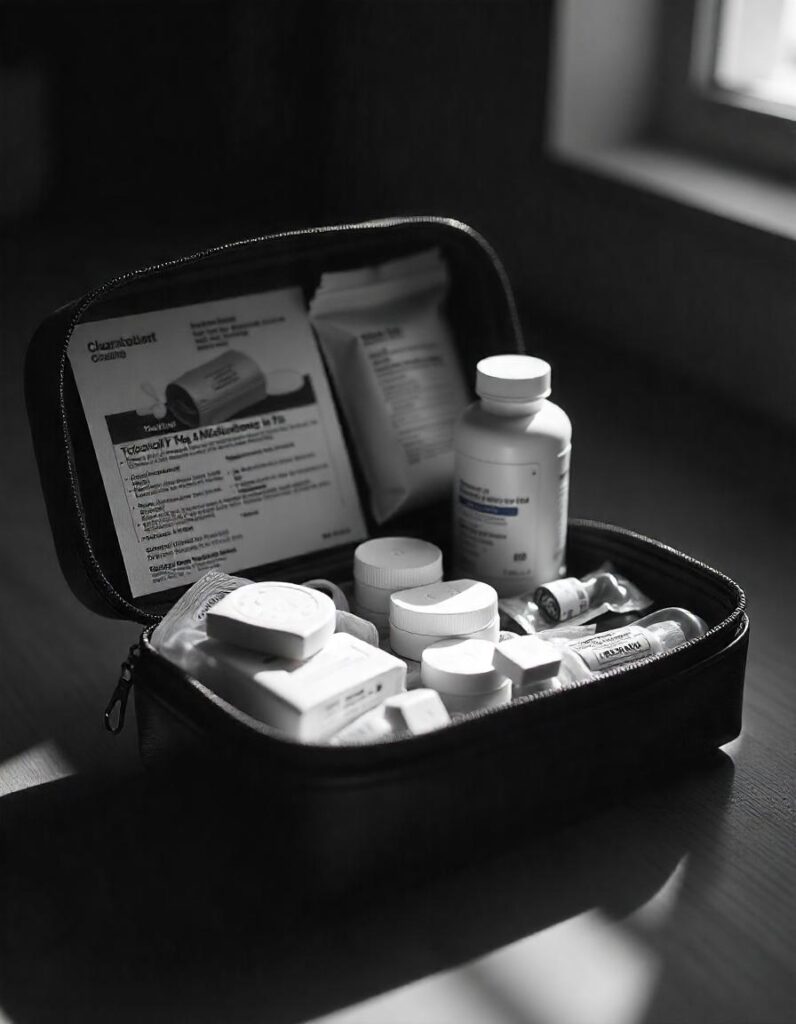Accidents and emergencies can happen unexpectedly, but being prepared with a well-stocked first aid kit can make all the difference. Whether you’re at home, traveling, or enjoying outdoor activities, having a first aid kit on hand is essential. Here’s a comprehensive guide on what to include in your first aid kit.
Essentials
- First Aid Manual: A guide to help you know how to use the items in your kit. This is invaluable in stressful situations.
- Adhesive Bandages: Various sizes for minor cuts and abrasions. Make sure to include waterproof ones.
- Sterile Gauze Pads: For dressing larger wounds. These are essential for controlling bleeding and preventing infection.
- Adhesive Tape: To secure gauze and bandages. It’s crucial for keeping dressings in place.
- Elastic Bandages: For sprains and strains. These help provide support and reduce swelling.
- Antiseptic Wipes: To clean wounds and prevent infection. Alcohol-free wipes are preferable for sensitive skin.
- Tweezers: For removing splinters or debris. Fine-tipped tweezers are best.
- Scissors: To cut tape, gauze, or clothing if needed. Blunt-ended scissors are safer.
- Disposable Gloves: To protect yourself and prevent contamination. Non-latex gloves are better for allergies.
- Thermometer: For checking body temperature. A digital thermometer is quick and easy to use.
- Safety Pins: To secure bandages or slings. These have multiple uses in a first aid kit.
- Instant Cold Packs: To reduce swelling and pain. These are handy for injuries like sprains.
- Emergency Blanket: To keep someone warm in a shock situation. These are compact and lightweight.
- CPR Face Shield: For giving rescue breaths safely. This provides a barrier to prevent infection.
Medications
- Pain Relievers: Such as acetaminophen or ibuprofen for relieving pain and reducing fever.
- Antihistamines: For allergic reactions. These can relieve itching, swelling, and rashes.
- Antibiotic Ointment: To prevent infection in minor cuts and scrapes. Apply after cleaning the wound.
- Hydrocortisone Cream: For insect bites and skin irritations. This can reduce redness and swelling.
- Burn Cream: To soothe minor burns. Look for one with pain relief properties.
- Antiseptic Solution: Such as hydrogen peroxide or iodine to disinfect wounds.
- Eye Wash Solution: For rinsing out eyes in case of exposure to irritants.
- Oral Rehydration Salts: For dehydration. These are particularly useful in hot weather or during illness.
Supplies
- Cotton Balls and Cotton Swabs: For cleaning and applying ointments. Sterile ones are best.
- Sterile Eye Dressings: For eye injuries. These protect the eye and help prevent further injury.
- Medical Adhesive Tape: For securing dressings. Make sure it’s hypoallergenic.
- Alcohol Pads: For disinfecting skin and instruments.
- Saline Solution: For cleaning wounds and eyes. This is gentle and effective.
- Medical Mask: To reduce the risk of spreading infections. Especially important during pandemics.
- Notepad and Pen: To take notes or communicate in emergencies. This can be crucial for passing on information.
Optional Items
- Digital Blood Pressure Monitor: For checking blood pressure. Useful for those with heart conditions.
- Instant Heat Packs: For muscle pain relief. These are great for aches and pains.
- EpiPen: For severe allergic reactions (if prescribed). Make sure to keep this up to date.
Maintaining Your First Aid Kit
- Regular Checks: Ensure your first aid kit is regularly checked and replenished. Replace any used or expired items.
- Accessibility: Keep your first aid kit in a cool, dry place, and make sure everyone in your household knows where it is and how to use it.
- Training: It’s also beneficial to have basic first aid training. Knowing how to use your first aid supplies properly can make a significant difference in an emergency.
Having a well-stocked first aid kit is just one step towards being prepared for emergencies. Stay informed, stay prepared, and stay safe!
